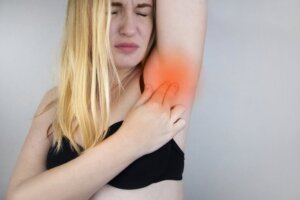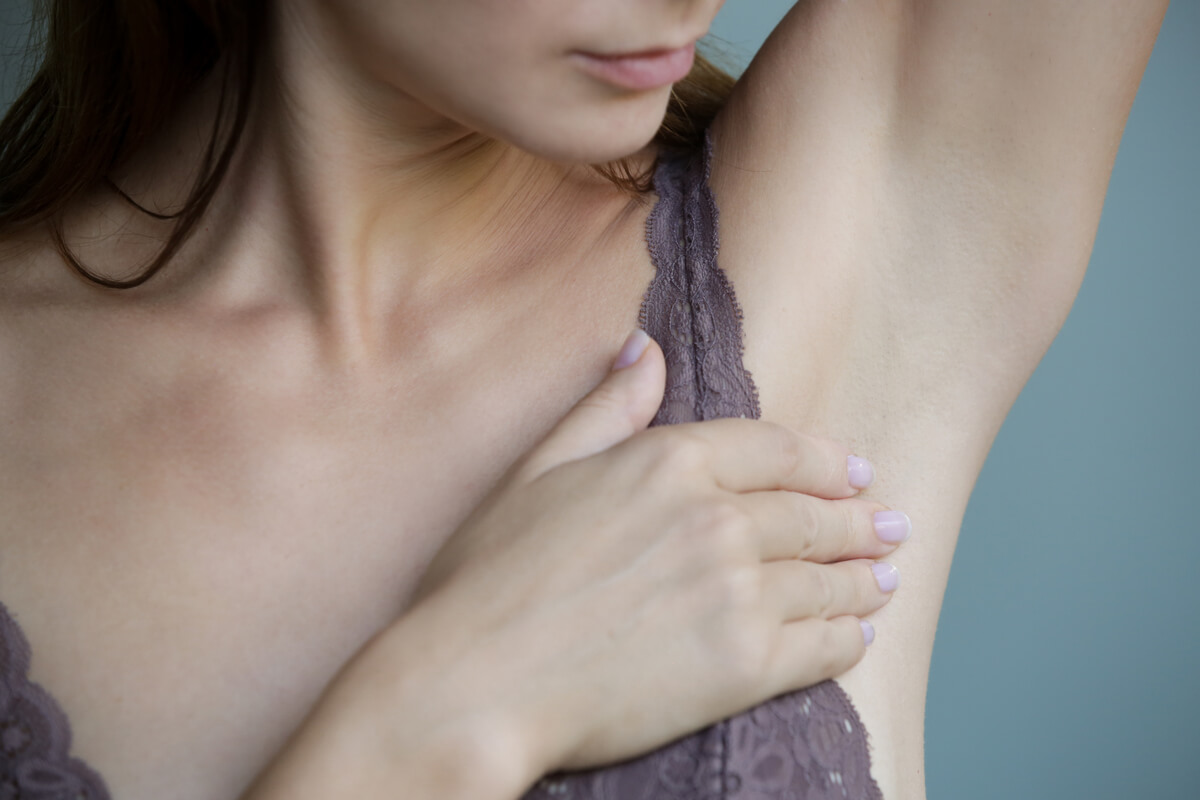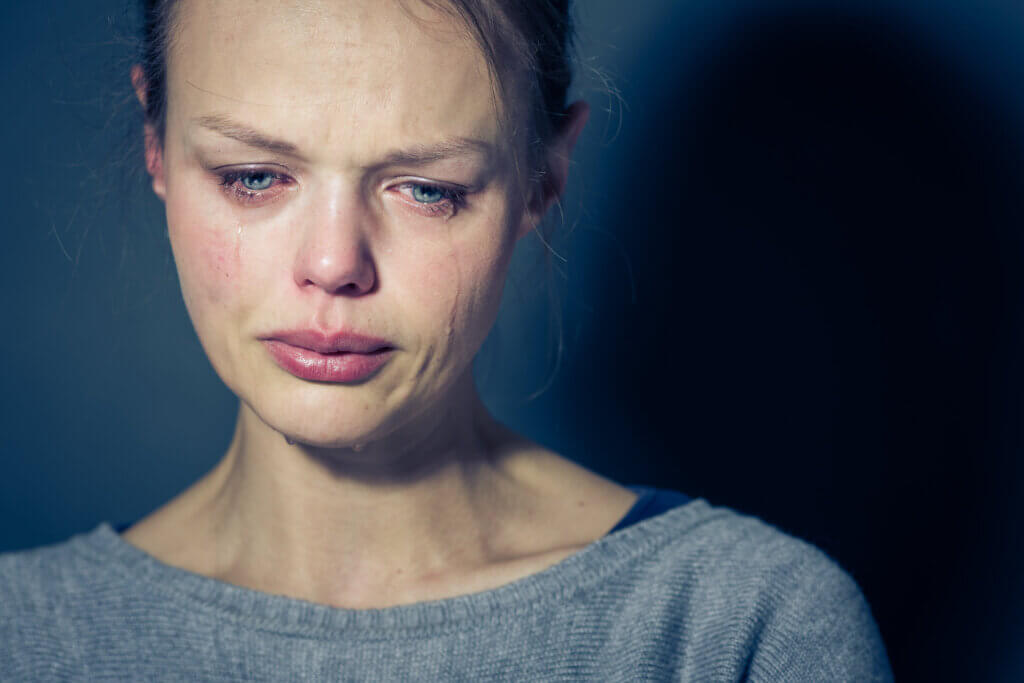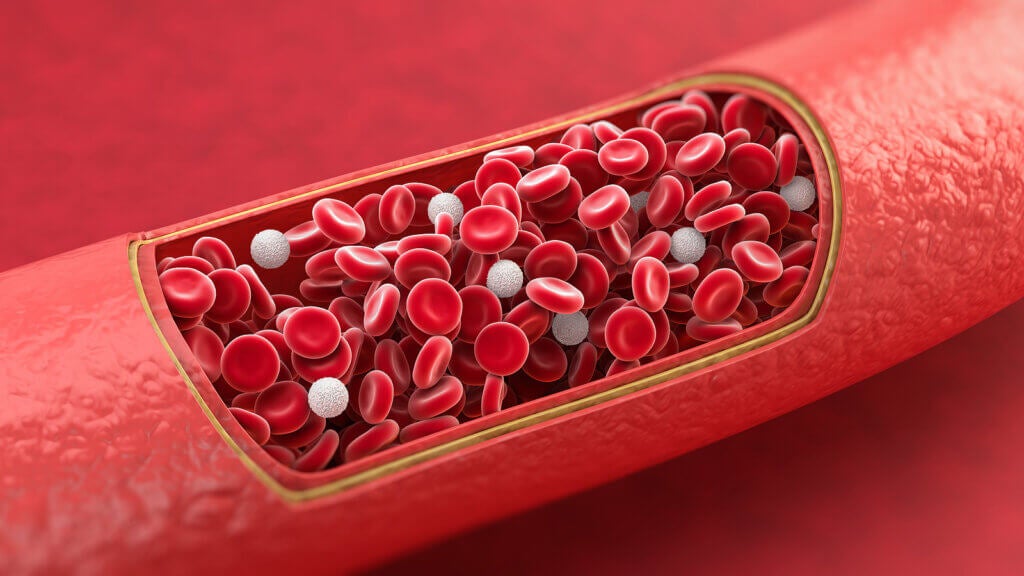What is Hidradenitis Suppurativa?

Despite how common they are, there are several skin conditions whose cause is unknown. Vitiligo, rosacea, and hidradenitis suppurativa are some examples of this.
Hidradenitis suppurativa is a disease that affects the hair follicles. To be more specific, it’s an inflammatory condition that chronically affects the pilosebaceous unit. It’s characterized by causing inflammation, as well as lesions in certain areas of the skin, such as the armpits.
At first, it can be mistaken for acne, but as it progresses, it becomes clear that it is another type of skin problem.
Symptoms

Hidradetinitis suppurativa is a condition that can be very uncomfortable and even painful. This is because the hair follicles become chronically blocked and inflamed. In turn, this usually causes the formation of bumps on the skin, forming abscesses.
Although the bumps are small in size (the size of a pea), they can be very annoying due to the inflammation and rupture of the hair follicles. Sometimes they open to the outside of the dermis and sometimes they don’t.
The MSD Manual states that abscesses (which are pus-filled pockets) are tender to the touch, painful, and smelly. “Often, permanent channels (called fistulous tracts) form between the abscess and the surface of the skin, and they ooze liquid”
The areas of the skin most affected are those where there’s greater friction, such as the armpits, groin, buttocks, and breasts, but it can also affect the anus area.
It should be noted that the affectation varies depending on the case. In some people, a few areas are affected, and in others just one. However, in all cases, the disease can be detrimental to the quality of life.
In addition, as the lesions tend to reappear and the healing process isn’t efficient and has to activate repeatedly, the skin thickens and becomes scarred.
Causes
Hidradenitis suppurativa isn’t caused by infection, poor hygiene, or poor shaving. In reality, it’s a disease of unknown origin. However, several hypotheses have been put forward.
In these, it has been speculated about its possible relationship with hormonal changes, heredity, and alterations in the immune system. Some even point to a possible multifactorial origin.
According to Mayo Clinic experts, “Smoking, being overweight, and metabolic syndrome may also be associated with the disease.”
Risk factors
Although the cause is unknown, it has been possible to identify some risk factors for hidradenitis suppurativa, such as:
- Smoking
- Being female
- Being between 18 and 30 years old
- Being overweight and obese (as pointed out by several recent studies).
Some consider that heat and humidity could also be considered triggers, as they increase sweating and friction, and, with it, the worsening of symptoms.
Diagnosis
The diagnosis of hidradenitis suppurativa is clinical. This means that it’s based on the symptoms that the patient manifests in the consultation and what they reveal to the doctor.
Generally, the doctor doesn’t need to ask for further tests. However, if the lesions are purulent, he may request a laboratory analysis of the pus (that is, a culture of the wound secretions) to determine the causative organism.
Treatment

Without proper treatment, the symptoms of hidradenitis suppurativa can become increasingly severe. For this reason, medical assistance is necessary right from the start, or as soon as it can be requested.
Treatment isn’t curative, but symptomatic. The application of antibiotic creams, the use of some oral antibiotics (such as clindamycin, rifampin, and doxycycline), and pain relievers are some of the most common treatment measures. However, it all depends on the case.
If the disease produces channels and can’t be controlled with the aforementioned treatment options, surgery is often chosen.
Surgical treatment can range from incision and drainage of some lesions, removal of nodules, to electrosurgery and surgical removal of the affected skin. In addition, laser therapy can help eliminate injuries.
Experts believe that the sooner treatment is started, the sooner the symptoms and disease progression can be controlled. However, recent research authors indicate that further study of the disease is still needed to improve treatment options and provide better outcomes for patients.
Finally, it should be noted that psychological support shouldn’t be neglected, even in mild cases, as it contributes significantly to the patient’s quality of life.
Despite how common they are, there are several skin conditions whose cause is unknown. Vitiligo, rosacea, and hidradenitis suppurativa are some examples of this.
Hidradenitis suppurativa is a disease that affects the hair follicles. To be more specific, it’s an inflammatory condition that chronically affects the pilosebaceous unit. It’s characterized by causing inflammation, as well as lesions in certain areas of the skin, such as the armpits.
At first, it can be mistaken for acne, but as it progresses, it becomes clear that it is another type of skin problem.
Symptoms

Hidradetinitis suppurativa is a condition that can be very uncomfortable and even painful. This is because the hair follicles become chronically blocked and inflamed. In turn, this usually causes the formation of bumps on the skin, forming abscesses.
Although the bumps are small in size (the size of a pea), they can be very annoying due to the inflammation and rupture of the hair follicles. Sometimes they open to the outside of the dermis and sometimes they don’t.
The MSD Manual states that abscesses (which are pus-filled pockets) are tender to the touch, painful, and smelly. “Often, permanent channels (called fistulous tracts) form between the abscess and the surface of the skin, and they ooze liquid”
The areas of the skin most affected are those where there’s greater friction, such as the armpits, groin, buttocks, and breasts, but it can also affect the anus area.
It should be noted that the affectation varies depending on the case. In some people, a few areas are affected, and in others just one. However, in all cases, the disease can be detrimental to the quality of life.
In addition, as the lesions tend to reappear and the healing process isn’t efficient and has to activate repeatedly, the skin thickens and becomes scarred.
Causes
Hidradenitis suppurativa isn’t caused by infection, poor hygiene, or poor shaving. In reality, it’s a disease of unknown origin. However, several hypotheses have been put forward.
In these, it has been speculated about its possible relationship with hormonal changes, heredity, and alterations in the immune system. Some even point to a possible multifactorial origin.
According to Mayo Clinic experts, “Smoking, being overweight, and metabolic syndrome may also be associated with the disease.”
Risk factors
Although the cause is unknown, it has been possible to identify some risk factors for hidradenitis suppurativa, such as:
- Smoking
- Being female
- Being between 18 and 30 years old
- Being overweight and obese (as pointed out by several recent studies).
Some consider that heat and humidity could also be considered triggers, as they increase sweating and friction, and, with it, the worsening of symptoms.
Diagnosis
The diagnosis of hidradenitis suppurativa is clinical. This means that it’s based on the symptoms that the patient manifests in the consultation and what they reveal to the doctor.
Generally, the doctor doesn’t need to ask for further tests. However, if the lesions are purulent, he may request a laboratory analysis of the pus (that is, a culture of the wound secretions) to determine the causative organism.
Treatment

Without proper treatment, the symptoms of hidradenitis suppurativa can become increasingly severe. For this reason, medical assistance is necessary right from the start, or as soon as it can be requested.
Treatment isn’t curative, but symptomatic. The application of antibiotic creams, the use of some oral antibiotics (such as clindamycin, rifampin, and doxycycline), and pain relievers are some of the most common treatment measures. However, it all depends on the case.
If the disease produces channels and can’t be controlled with the aforementioned treatment options, surgery is often chosen.
Surgical treatment can range from incision and drainage of some lesions, removal of nodules, to electrosurgery and surgical removal of the affected skin. In addition, laser therapy can help eliminate injuries.
Experts believe that the sooner treatment is started, the sooner the symptoms and disease progression can be controlled. However, recent research authors indicate that further study of the disease is still needed to improve treatment options and provide better outcomes for patients.
Finally, it should be noted that psychological support shouldn’t be neglected, even in mild cases, as it contributes significantly to the patient’s quality of life.
- García-Valdés y cols. Hidrosadenitis supurativa. Parte I. Epidemiología, etiopatogenia, clínica y su diagnóstico. Dermatología Cosmética, Médica y Quirúrgica [Internet]. 2017 [cited 2021 Jul 11];15(3):176–83. Available from: https://www.medigraphic.com/pdfs/cosmetica/dcm-2017/dcm173g.pdf
- García-Valdés L y cols. Hidrosadenitis supurativa. Parte II. Tratamiento en medidas generales, médico y quirúrgico. Dermatología Cosmética, Médica y Quirúrgica [Internet]. 2018 [cited 2021 Jul 11];16(1):63–9. Available from: https://www.medigraphic.com/pdfs/cosmetica/dcm-2018/dcm181j.pdf
- García-Martínez FJ, Pascual JC, López-Martín I, Pereyra-Rodríguez JJ, Martorell Calatayud A, Salgado-Boquete L, et al. Actualización en hidrosadenitis supurativa en Atención Primaria. Med Fam Semer [Internet]. 2017 Jan 1 [cited 2021 Jul 11];43(1):34–42. Available from: https://www.elsevier.es/es-revista-medicina-familia-semergen-40-articulo-actualizacion-hidrosadenitis-supurativa-atencion-primaria-S1138359315004323
- Keri JE. Hidradenitis supurativa – Trastornos de la piel [Internet]. Manual MSD versión para público general. [cited 2021 Jul 11]. Available from: https://www.msdmanuals.com/es/hogar/trastornos-de-la-piel/acné-y-trastornos-relacionados/hidradenitis-supurativa
Este texto se ofrece únicamente con propósitos informativos y no reemplaza la consulta con un profesional. Ante dudas, consulta a tu especialista.







